
In our conversations with many architects, we often hear about how their understanding of design has evolved over time - from being about giving their work a signature identity, to letting their cultural identity and background bubble to the surface, to finally understanding that design, as a process, is hard to define and pin down. Speaking with Lyndon Neri and Rossana Hu of Shanghai-based Neri&Hu Design and Research Office opened us up to a whole new dimension, of how design has a sense of meaning and purpose, can help solve innumerable problems of simple day-to-day functioning, and retain our cultural, social and historical roots.
Architects, designers, creators, innovators, handcrafters - it’s hard to slot Neri and Hu into boxes, except a boundless one labeled ‘problem solvers’. Both of them come with spangled, almost parallelly-running portfolios - Neri studied Architecture at the University of California at Berkeley and Harvard University, before going on to work for Michael Graves & Associates and a number of other architectural firms in New York; Hu studied Architecture, Urban Planning, and Music at the University of California at Berkeley and Princeton University, and followed it up with professional stints at Michael Graves & Associates; Ralph Lerner Architect; Skidmore, Owings and Merrill; and The Architects Collaborative (TAC).
“Studying abroad pretty much formed the foundation of our architectural thinking and design process. Design elements are not like chemicals that we can mix into a formula and create results. It is a much more artistic and undefinable process, but everything we come into contact with becomes who we are, and that builds the inspiration pool for our work,” reveals Neri.
Diese Geschichte stammt aus der Volume 7 Issue 6-Ausgabe von Home & Design Trends.
Starten Sie Ihre 7-tägige kostenlose Testversion von Magzter GOLD, um auf Tausende kuratierte Premium-Storys sowie über 8.000 Zeitschriften und Zeitungen zuzugreifen.
Bereits Abonnent ? Anmelden
Diese Geschichte stammt aus der Volume 7 Issue 6-Ausgabe von Home & Design Trends.
Starten Sie Ihre 7-tägige kostenlose Testversion von Magzter GOLD, um auf Tausende kuratierte Premium-Storys sowie über 8.000 Zeitschriften und Zeitungen zuzugreifen.
Bereits Abonnent? Anmelden
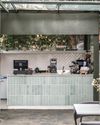
BALI IN BENGALURU
Studio Skapa Architects devises a sophisticated design for a cafe in Bengaluru that integrates with the surrounding nature
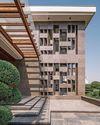
A ROBUST PRESENCE
Hiral Jobalia Studio helms the design of this 14,000sqft Firozabad residence that is accompanied by generous landscaped areas measuring nearly twice the size of the building footprint
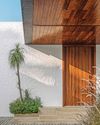
A SUBLIME STANCE
This spacious house in Gujarat, conceptualised by Dipen Gada & Associates, does away with frills and ostentation in favour of an aesthetic dictated by clean lines and tasteful restraint
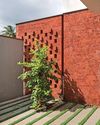
A CONTEXTUAL NARRATIVE
Natural elements effortlessly weave their way into this Ratnagiri house designed by Hrishikesh More Architects
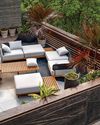
NATURE'S HUG
Thoughtfully designed by Manoj Patel Design Studio, this home in Gujarat integrates functionality with unique spatial experiences
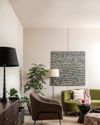
CLASSICALLY CONTEMPORARY
A confluence of neo-classical and modern elements form the crux of this fuss-free family home by TaP Design Inc.
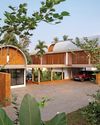
THE BLURRING REALMS
Conceived by LIJO.RENY.architects, the architecture of The Stoic Wall Residence-located in Kerala - shapes up in response to the region's tropical climate and the site's challenging physical conditions
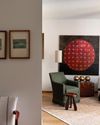
A UNIQUE BLEND
Faisal Manzur facelifts this Chennai home with elements that seem simple but are crafted with utmost attention to detail

BRICK TALES
Charged Voids fosters an intimate brick-walled sanctuary for a multi-generational family in Chandigarh

The future is VERNACULAR!
Responsible and responsive, architects Pashmin Shah and Satyajeet Patwardhan are at the forefront of taking things slow and championing the modern vernacular design approach that is steeped in science, culture and so much more. In this exclusive, they discuss the larger picture with us